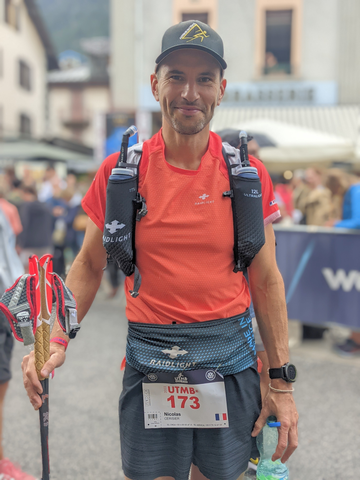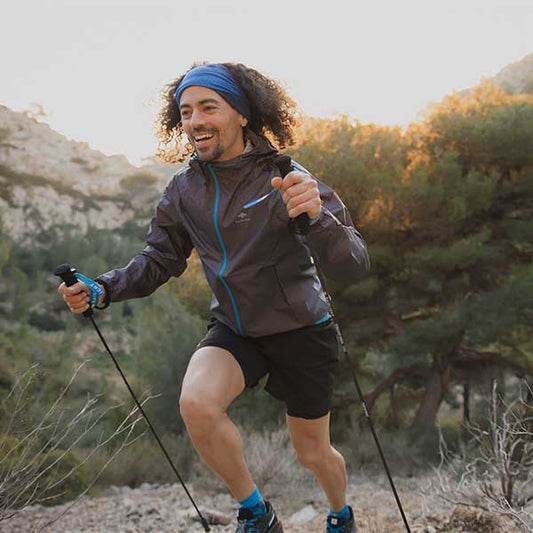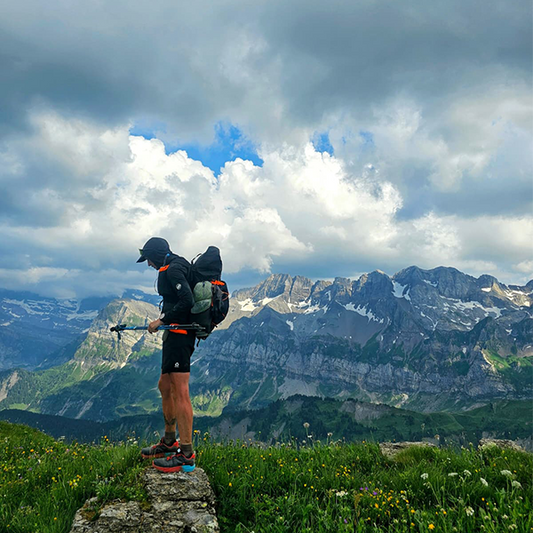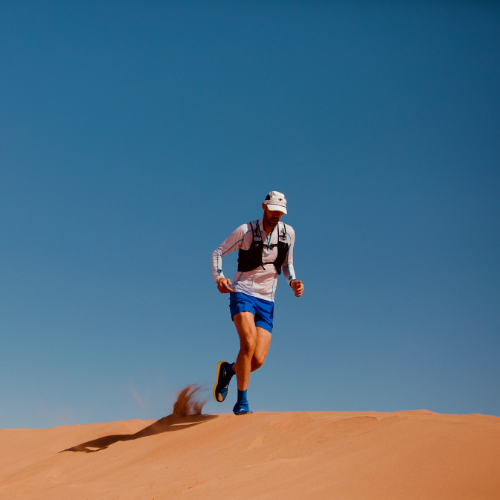Winter has set in and the days are getting shorter, so if you want to keep up your training rhythm, running before or after work means running at night. This particular situation requires a bit of organisation and equipment if you want to do it safely and keep the fun above all else.
In this article, Nicolas Cerisier, Raidlight ambassador, qualified trail running coach and ultra-trail runner, shares his advice on training and equipment for night-time running.

Small animals, strange noises, scary tree shapes - for many, running at night is like a remake of a Hitchcock film, but rest assured there are no fundamental differences between running at night and during the day. As Nicolas points out, the barrier is more mental.
Running at night: seeing and being seen
See
Obviously, you need a good headlamp. Power, measured in lumens, is obviously important. For a good balance between comfort of use and battery life, count on between 200 and 500 lumens. At night, there is a difference in perception, as if it were difficult to distinguish the environment in 3 dimensions. That's why you also need to make sure you can see sufficiently to the sides, so the width of the beam has an impact and an importance. Chest lamps can also be an interesting alternative or complement to a headlamp, as they offer a different angle of illumination.
During your trail outings, remember to adapt the intensity of your headlamp: on uphill sections, you can turn it down, while on downhill sections, it would be better to turn it up to get a better view of the terrain, particularly if you are going faster.
Being seen
Dress so that you are visible. Make sure you wear trail clothing with reflective strips. You can also wear a high-visibility reflective armband or belt. There is a red light on the back of some head or chest protectors.
Click here for all our advice on winter clothing.
Running at night: safety first
Running at night means being more attuned to your sensations, and it's also an opportunity to run in a different atmosphere and approach your usual routes in a different way. Depending on the lighting on your headlamp, you'll need to learn to anticipate variations in the terrain (roots, holes, etc.). It's a bit tricky at first, but you soon get the hang of it.
Running at night also means choosing an appropriate route: choose well-lit, easily accessible paths that you already know. Running at night is not an opportunity to discover new paths.
Find out when the stadiums in your town are open, as they are often well lit. Avoid parks that are poorly lit and often crowded at night. Don't hesitate to turn back if you don't feel comfortable or have seen something suspicious. At such times, trust your instincts. To be on the safe side, if you choose to run in a park or on a poorly lit path, avoid running with headphones on (even less so with noise-reducing headphones). Take advantage of this moment to concentrate on your sensations and breathing.
If you're running at night in winter, watch out for hard, slippery ground and patches of ice that may be hidden by leaves. Choose your route accordingly (this advice also applies when you run in the middle of the day in winter).
Running at night: adapt your training
Running at night requires you to be able to anticipate the irregularities of the paths (holes, roots...) and to be more attentive to what's going on around you. Sometimes you'll also need to adapt your speed, as visibility is not the same as in daylight. It's a bit tricky at first, but as your night runs progress, you'll get used to it and you'll see the different obstacles more quickly.
If you run at night or on dark, poorly lit or slippery roads, avoid fast runs, sprints or splits. You could easily hit a stone or slip. Especially as you don't get the same feeling of speed when you're splitting with a headlamp.
As far as possible, avoid planning long runs in winter that would require you to do a lot of volume at night. The headlamp is a false friend, and mental and physical fatigue sets in more quickly at night. As far as possible, try to run as much as possible during the day. For those who can, try to shift your training to the lunch break, for example. Unfortunately, not everyone has the opportunity to adjust their timetable, so you can opt for solutions that make up for the lack of sunlight:
Dawn simulator lamp for early risers
More traditional UV lamp
Consult your doctor to find out whether or not vitamin D supplementation is necessary
Worried that running at night at the end of the day will affect your quality of sleep? Here are a few tips to help you fall asleep after a late run.
As already mentioned, avoid doing sessions that are too intense, long splits or fartleks. If you have a session of this type, take it easy again (10 minutes at a very gentle pace, or even walk).
Take a shower, alternating between hot and cold water every 30 seconds, then finishing with hot water.
Eat a quality meal that provides all the nutrients you need (animal or vegetable proteins, starchy foods, vegetables and fruit).
Drink warm chamomile tea.
Just before going to bed, take a few minutes to stretch (back, shoulders, solar plexus). Stretching before bed has been shown to improve sleep quality. You can also take a few minutes of long inhalations and exhalations to soothe your body and brain (or a cardiac coherence session for those in the know).
Click here for all our advice on training in winter
Once you've got over your apprehensions about running at night, you'll have the feeling that time is suspended, that everything is calm and peaceful.
It's a sporting experience you should try if you can!
You can find Nicolas Cerisier on his website https://www.autourdutrail.com/ or on his social networks under the name Autourdutrail.










